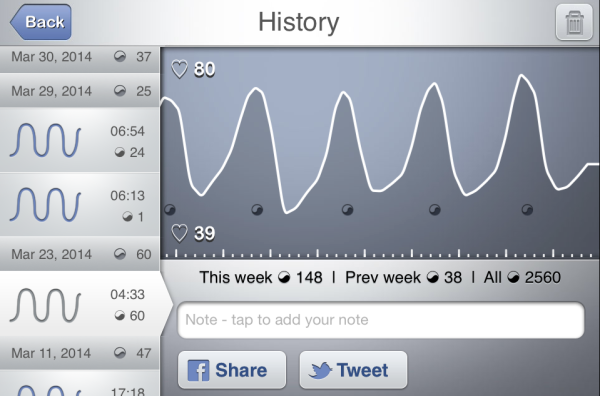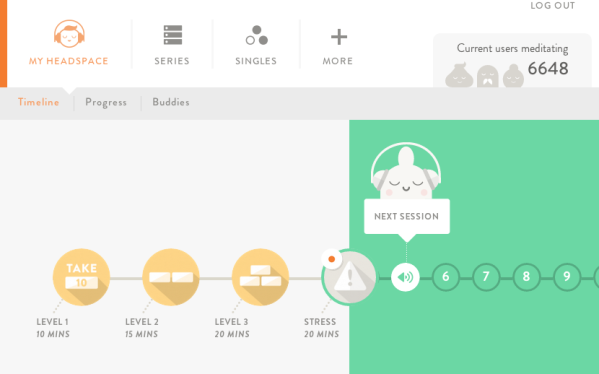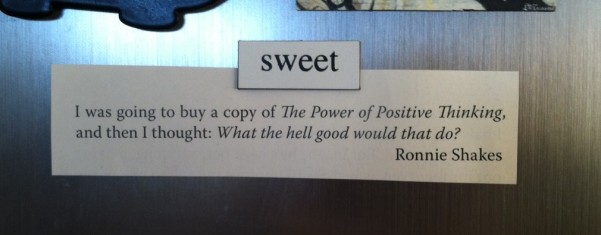Morning Scripts: Wake up, Kick Ass Every Single Day
Summary: Below you’ll find an explanation of how priming myself with a scripted morning routine has been a major positive change this year. I’ve also included the exact morning routine I’m using now.
Is it possible to make yourself location-agnostic, bulletproof to circumstance, resilient in a way that ensures marching down the road to high-level outcomes every damn day until they happen?
I consider myself extremely motivated, but plenty of mornings I wake up and don’t want to move. It’s not that the obstacles are too big or that I don’t enjoy what I do, but some kind of meta-level inertia has clogged the gears. Writers would call it writer’s block. Motivational speakers would call it “needing a state change.”
It can be caused by almost anything: lack of sleep, overtraining, burning out on work. No matter how motivated I was yesterday, sometimes the muse just left the building over night.
But what if you could reboot your brain–in 10-30 minutes–and get into a state of focus and effortless output regardless of your current mental/physical/emotional crisis?
A morning script can guarantee high-level output, daily variables be damned.
I’ve talked a lot about how essential it is to write down your goals (see dreamline post).
But most people don’t get the most important part: the process.
It’s actually more important to schedule time to review your goals/dreamlines each week than it is to actually write them down. It’s the codified process of reviewing the target and making sure you’re on the right path that guarantees success, not writing down the goal.
Want to hit big outcomes?
Figure out the daily process that will make them inevitable.
This means:
- Doing the same, repetitive, right things every day.
- Staying motivated to keep this up day in and day out.
The key to staying motivated is having the right awe-inspiring targets. But sometimes this isn’t even enough–especially when you’ve been thinking about them for a long time.
So that leaves us with the hard truth about getting somewhere in life: the foundation of success is built on simple, concrete, and potentially monotonous daily action.
While the macro-cycle is important too–working in rest periods during the week/month/year, periodically reviewing goals and aspirations, 80/20 analysis etc etc–at the core of everything is the mini cycle, the day to day grind, the place where sleeves are rolled up and effort is applied.
So what happens when you wake up and don’t feel like doing anything?
Say you’re now your own boss. You wake up in cold dark room in Central Europe. The weather sucks and for no good reason you didn’t sleep well.
Is it possible to make yourself location-agnostic, bulletproof to circumstance, resilient in way the ensures successfully marching down the road to specific outcomes every damn day until they happen?
What I’ve come to find out is: what I do first thing in the morning is crucial. Setting a framework and mental state for making good decisions and focusing on the right things changes every subsequent action.
Doing this correctly is more important than anything else I’m going to do during the day, which means winning the first hour is the key to the whole castle.
The morning ritual I’ve come up with here is based on a limited but effective understanding of how the brain works: both in terms of mentally cleaning house and focusing on what matters. Because what you actively think about, as well as what you allow yourself to dwell on, has profound influence on what you actually do.
Priming – You are more suggestion-prone than you think
I first learned about the concept of priming from Thinking, Fast and Slow, which summarizes decades of research conducted by psychologist Daniel Kahneman into the way our brains work, and why we’re so prone to cognitive biases that cause us to make simple but important mistakes (this is one of the most important books I’ve read in the last few years in terms daily relevance).
Priming is essentially: what we read, listen to, or think about, causes a cascade of associations that prime us to make certain decisions (vs others).
We like to think we’re mostly in control of what we do, but Kahneman illustrates in experiment after experiment innate biases that affect our judgement and change our decision-making based on our mental state. The simplest example I can think of is watching motivational workout videos to psych yourself up for the gym. It’s a lot easier to say yes once you’ve primed yourself that being fit is really important.
My favorite experiment discussed in the book required students to complete sentences given a set of words. One set of words were all associated with being old (e.g. Florida, golf, etc). The other set were not. The students were then asked to walk down the hall to complete another task in a separate room. Without the students knowing it, researchers were actually measuring the time it took students to move from classroom to classroom. The students who had created sentences with words associate with being old walked significantly slower than those in the other group.
Just reading words associated with being old caused significant changes to their real-world behavior.
So, if thinking about being old makes you move more slowly, what do you think a focus (even briefly) on being tired, unhappy, unsuccessful, or on any other myriad problems does to us?
What’s the answer?: Think about something else!
The morning script is designed to prime for massive output
“Lifestyle design depends on massive output.”
-The Four-hour Workweek
Obviously, we’re not interested in walking more slowly. We want to get out of bed and knock it out of the park. Fortunately we can use priming to our advantage, and the best way to do this is script a morning routine that walks us through it.
The goal is to have an operating procedure the minimizes thinking and effortlessly puts you into the right mental state.
Having a script is also a way to eliminate decisions about what you’re doing for the day. Every decision has a cost and it’s important to eliminate the ones that don’t matter (like “what am I going to wear today“).
Here is an explanation of the key pieces of my morning script (the full thing is at the bottom of the post):
I. Diagnostics – How am I doing today?
1. Heart Rate Variability Check
The first thing I do before getting out of bed is check my heart rate variability (HRV). HRV is a measure of stress levels as well as an indicator of overtraining.

Your heart rate should change as you breath in and out, and the difference between high and low tells you a lot. Someone who is chronically stressed has a steady high frequency beat–vs high on inhale but low on exhale, which is normal. But a low HRV can be fixed quickly with training.
You can learn a lot more about this on Bulletproof Executive (where I first learned about this) or get these apps:
- HRV4 Training – Measure your HRV. Get the app on Itunes. Also allows you to enter training information to track how it affects HRV. Sweet.
- Stress Doctor – This app is not for measurement, it’s for training your heart rate variability, which is basically meditation with biofeedback. Your goal is to draw nice smooth curves as you inhale and exhale–difficult and frustrating at first but once you get the hang of it extremely powerful. It’s almost impossible to remain stressed out after 5 minutes of this, and now just thinking about the curves in the app calms me down. Highly recommend doing this daily. Get the app on Itunes.

II. Clearing the Mental Slate
1. Meditation
This has taken me years to finally commit to daily. It wasn’t until I heard Tim Ferris say that the number 1 thing he’s found among his podcast interviewees (all extremely high-level people) is that they all meditate.
But like things like Yoga, I can’t do this on my own. Luckily there are some amazing apps now that walk you through it:
- Headspace – A gamified meditation app, which includes a bunch of different lesson plans as well as a foundational series. Starts out at 10 minute sessions and works it’s way up. Brilliant. No matter what I feel like going in I always feel better after completing the daily session.

2. The Full State Change
If I’m really in a funk for some reason–and so far 20 minutes of guided meditation clears that up most of the time–I’ll jump into the shower, dial it to freezing, then turn it on full blast and stand in a stream of ice-water for 30 seconds.
Talk about a 100% new you.
Hat tip to Tony Robbins for that one. Works even better if you have a cold body of water like a lake to jump into.
III. Priming – Setting up a new mental state
Once my head is totally clear and I’m calm and focused, it’s time to set the conditions for the day.
1. 5 minute journal
Another thing Mr. Ferris turned me on to (big surprise). A simple idea that when you briefly focus on things you’re grateful for you can’t be angry or afraid. Tony Robbins (podcast interview linked below) also spends a lot of time focusing on gratitude, which is a simple way to prime positive emotions.
The exercise asks you to write down:
- 3 things I’m grateful for
- 3 things that would make today great
- 2 daily affirmations (I am great because….)
You can buy the actual Five Minute Journal on their website or download the app, but I’d recommend for travelers to just use a notebook.
2. Visualizing best future outcomes
I do the above every day. The rest of this is for days I’m working.
I have a picture in my head of where I want to be in the next few years: What I’m doing, who I’m with, what it looks like, what I feel like. It’s a comprehensive picture of the best possible life I can imagine.
I spend a few minutes imagining this future scenario in full color HD, and by the time I’m done I’m ready to do just about anything to make it a reality.
3. Visualizing success in work/creative outlets
There’s a well-known book called Think and Grow Rich that helps you codify what you want in life, monetarily speaking. It’s another exercise for priming you to work your ass off, by writing down how much money you want (the target), what you’re willing to give up to get there, and how you’re going to achieve this. The idea is that first thing in the morning (and before bed) you read this out loud.
However you go about this, the key is to visualize in detail–until you feel some kind of deep emotional response–a future scenario where you have everything you want. And visualize it as if it already exists, as if you’ve already achieved it all.
Here’s the whole thing as a siimple one-page script I look at and follow every morning:
My 2015 Daily Success Script
** Morning Routine **
Every Day –
- HRV Check – 1-3 min.
- Meditate 10-20 min using headspace app.
- Make coffee and protein shake.
- Take supplements.
- 5 minute journal-Write down the following (if useful get app)
– 3 things I’m grateful for
– 3 things that would make today great
– 2 daily affirmations (I am great because) - Option: 50 minutes of writing
- Option: Cold shower
**Work Days -**
Visualization / priming exercise:
- Visualize the best life you can imagine.
- Read your Think and Grow rich statement.
** During the Day **
- Set a timer and work in 50-90min increments.
Any significant stress response:
- Stop and take 10.
- Do 5 minutes on the HRV training app.
- Remember the obstacle is the way – “I GET to do this.”
What this script is missing
One of the most important things this particular script is missing is daily writing and/or journaling. I’ve got writing down as an option when time permits, but journaling is different: it’s an unstructured free-flow of consciousness onto paper. The purpose isn’t to log what happened in my life, but to take what’s spinning around in my head and write it down. There’s something very therapeutic about this, almost as powerful as meditation.
Does this script work all the time?
No, nothing is perfect. But this eliminates a lot of days that would have been ineffective. It gets me from something like 80% to 95%.
By the way, I’m not suggesting you should be using this script to grit your teeth and do things you don’t really want to do. The real magic bullet for motivation in life is to be 100% in charge of where you’re going and doing what you love to do. But regardless of activity, this script can help you stay on track and get you through the inevitable day to day hard work.
Doing this routine whips me into a sort of frenzy and by the end I’m ready to go.
Resources and Further Reading
- Tim Ferris Podcast: Tony Robbins on Morning Routines, Peak Performance, and Mastering Money
- Tim Ferris Podcast: What I’d Add To The 4-Hour Workweek for 2015 (And Much More)
- Tim Ferris Podcast: Josh Waitzkin on the Art of Learning and how to use priming for high level performance
- Thinking, Fast and Slow – How to identify and avoid common mental pitfalls. See review here.
- Think and Grow Rich – The why and how of visualizing being successful to make it happen.
- Daily Rituals – I’m reading this now, but an amazing collection of routines from top achievers in history.
- What my morning Journal Looks like – Four Hour Workweek blog
- The Magic of Thinking Big – Another good one. Inspired a lot of Tim Ferris’ work.
- Don’t think of an Elephant – Classic by cognitive linguist George Lakoff on how to control voter outcomes by understanding how the brain works.
- The Obstacle is the Way – This book is blowing my mind. Easy introduction to Stoicism. Listen to the podcast interview with Ryan Holiday for more.





